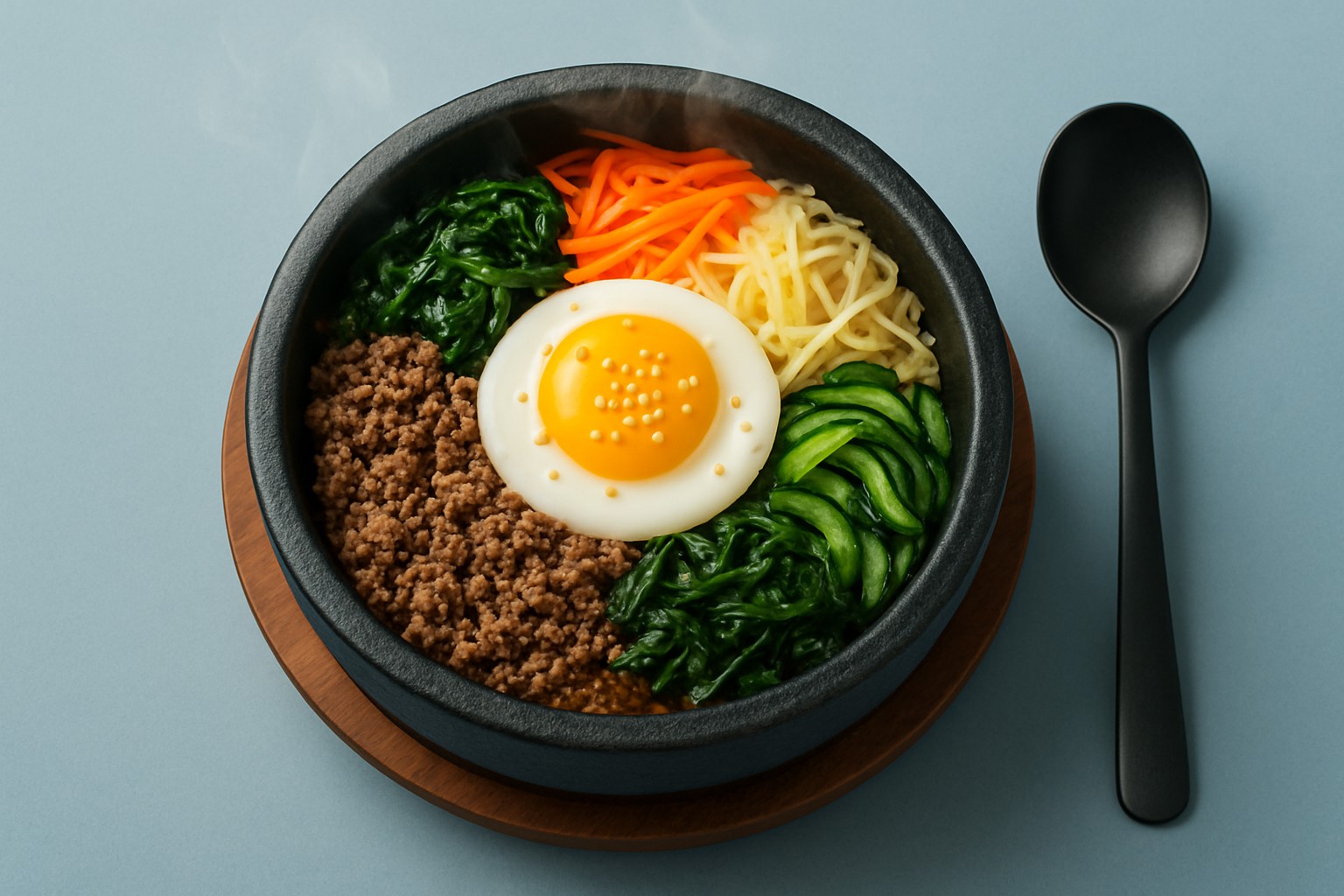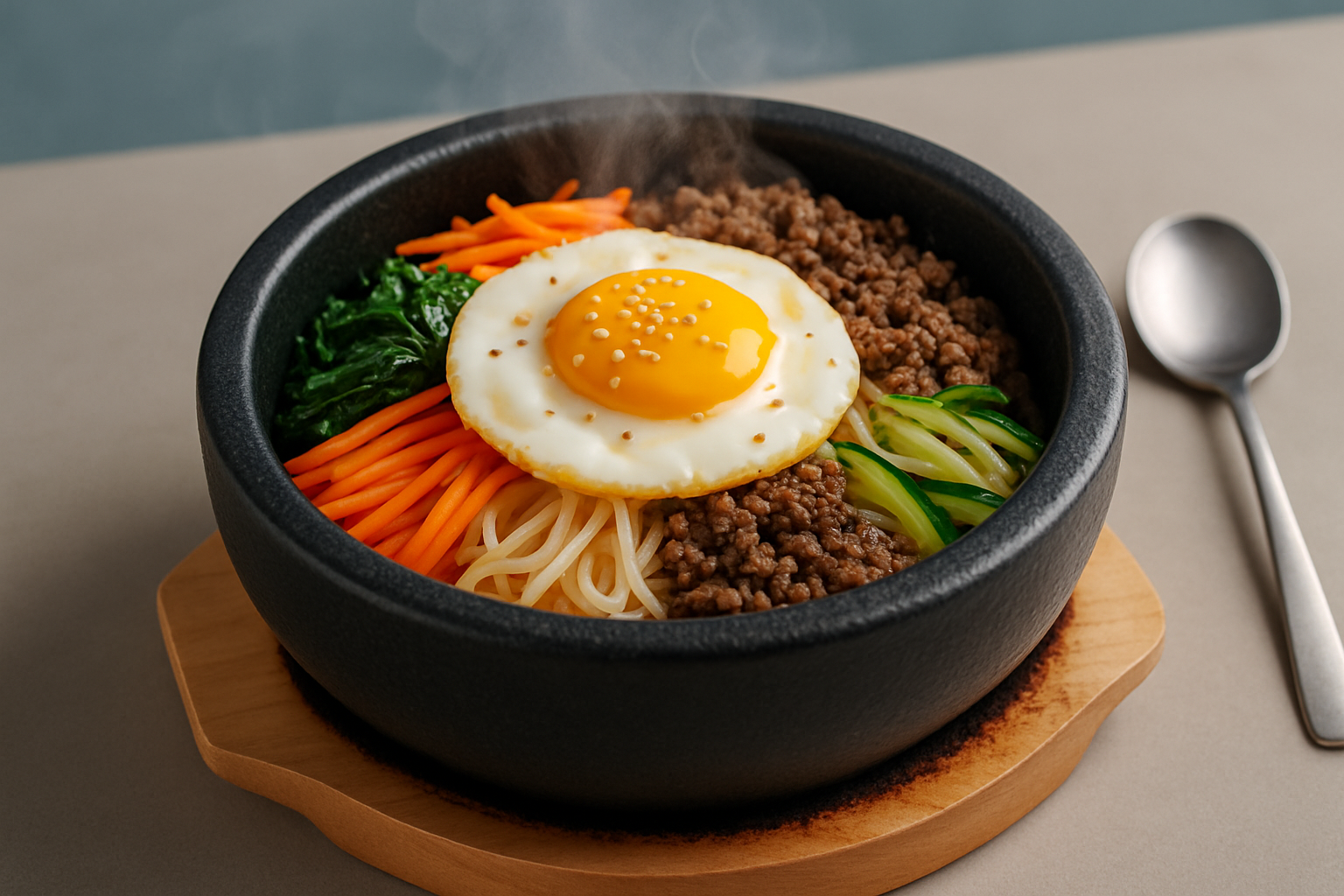How To Cook Dolsot Bibimbap That Tastes Like Restaurant Style

- Discover the secrets to crafting the irresistible crispy rice crust (nurungji) that turns dolsot bibimbap from ordinary to unforgettable.
- Get the lowdown on must-have ingredients and tools that bring the restaurant vibe into your kitchen.
- Follow a straightforward step-by-step walkthrough that will have you assembling and cooking your bibimbap like a seasoned pro.
- Avoid the usual traps like a scorched crust or soggy bland veggies with tried and true tips from the experts.
- Explore flexible options for proteins and spice levels that give you the freedom to make the dish truly your own.
Dolsot bibimbap is a beloved Korean classic with the name literally meaning "stone pot mixed rice." What sets it apart are the bold punchy flavors and the vibrant mix of colorful ingredients. It also has that oh-so-satisfying crispy rice crust that forms at the bottom of the hot stone bowl. This dish truly captures the heart and soul of traditional Korean comfort food. Whipping up restaurant-quality dolsot bibimbap at home is incredibly rewarding because it lets you dive into that sizzling mouthwatering meal without stepping outside. Nailing the perfect crispy crust and balancing the medley of textures and flavors can be tricky, especially if you’re new to it.
Understanding Dolsot Bibimbap and What Makes It Stand Out
The dolsot is a sturdy stone pot famous for holding onto heat like a champ and this is key to crafting the coveted crispy rice crust known as nurungji. Pair it with vibrant seasoned vegetables, marinated proteins and a punchy spicy gochujang sauce.
Key Ingredients That Really Bring Dolsot Bibimbap to Life
Whip up a genuinely authentic dolsot bibimbap by choosing short-grain Korean rice whose natural stickiness gives the dish that comforting texture. Next, round up a mix of fresh veggies like spinach, bean sprouts, carrots and mushrooms. Think of it as painting your bowl with flavors. For protein, go with ground beef or tofu whatever suits your mood or dietary whims. The real game-changer is gochujang sauce. This little red wonder brings a spicy savory punch that ties the whole dish together like a well-rehearsed symphony. Don’t forget a drizzle of sesame oil and a sprinkle of toasted sesame seeds for rich nutty depth. And just when you think you’re done, top it off with a fried egg – that golden touch that seals the deal.
| Category | Ingredient | Quantity (per serving) | Recommended Substitutes |
|---|---|---|---|
| Grains | Short-grain rice | 1 cup (uncooked) | Sushi rice, or if you like, medium-grain rice |
| Vegetables | Spinach | 1/4 cup (blanched) | Kale or Swiss chard, both solid options |
| Bean sprouts | 1/4 cup (blanched) | Mung bean sprouts work just as well | |
| Carrots (julienned) | 1/4 cup | Zucchini or bell peppers, for a little twist | |
| Shiitake mushrooms | 1/4 cup (sautéed) | Button mushrooms or hearty portobello do the trick | |
| Proteins | Ground beef | 100g | Ground chicken, or if you are feeling adventurous, tofu or tempeh |
| Egg (fried or raw) | 1 large | Soft-boiled egg, if you prefer something a bit gentler | |
| Sauces | Gochujang (Korean chili paste) | 2 tbsp | Sriracha mixed with a pinch of miso paste can step in nicely |
| Garnishes | Sesame oil | 1 tsp | Toasted perilla oil, for a subtle but lovely change |
| Toasted sesame seeds | 1 tsp | Chopped nuts like pine nuts add a nice crunch |
Equipment Needed and Handy Tips for Picking and Getting the Most Out of Your Stone Pot
Go for a genuine dolsot made from thick heat-hugging stone about 6 to 7 inches across—that's just right for a single serving. If one is playing hard to get, a sturdy cast iron or ceramic pot can step in nicely. When you bring home a new stone pot, take extra care by seasoning it first. Slowly warm it up and give the inside a light coat of oil—this trick works wonders to keep things from sticking and saves you from cracks.
A Clear Guide to Cooking Dolsot Bibimbap Like an Expert (or at Least Like You Know What You’re Doing)
Rinse the rice well until the water runs clear—this helps wash away extra starch that might make things gummy. Then let it soak for at least 30 minutes because it makes all the difference in getting that perfect texture.
Cook the rice in the dolsot: Give the stone pot’s bottom and sides a light coat of sesame oil to keep things from sticking. Dump in your soaked rice and water according to your usual ratio and cook over medium heat until the rice is tender and a crispy crust forms underneath.
Prepare the vegetables: Blanch the spinach and bean sprouts quickly to keep their snap. Sauté the mushrooms and carrots separately and season each with salt, garlic and a drizzle of sesame oil—simple but it really makes those flavors pop.
Cook the proteins: Sauté ground beef with garlic, soy sauce and pepper until it’s nicely browned and cooked through. If you’re going the tofu route, pan-fry or braise it with soy sauce until it soaks up all that savory goodness.
Assemble the dish: Once your rice is ready in the dolsot, go ahead and arrange the veggies and protein on top in cheerful colorful sections—we eat with our eyes first.
Create the crispy crust: Place the assembled dolsot bibimbap over low heat for another 3 to 5 minutes. This step crisps up the bottom rice beautifully without burning it. It’s the little extra touch that takes the dish from good to memorable.
Add sauce and garnishes: Crown it all with a fried egg and drizzle on some zingy gochujang sauce along with more sesame oil. Don’t forget to shower toasted sesame seeds over everything for that perfect final touch.
Serve right away: Mix it all up just before digging in so you get that exciting combination of warm crispy textures and rich layered flavors in every bite.

Sizzling dolsot bibimbap with vibrant vegetables and crispy rice crust fresh from the stone pot.
Nail that perfect crispy rice crust by gently warming the oiled rice resting at the bottom of the dolsot without letting it burn. I’ve found that using medium-low heat after cooking helps the crust form slowly. Just keep an eye on it so it doesn’t scorch. And a little heads-up: don’t go overboard with the oil because too much can turn your crust into a greasy nightmare. What you’re aiming for is a golden-brown lightly crunchy layer called nurungji that contrasts beautifully with the soft rice and toppings.
Common Slip-Ups When Making Dolsot Bibimbap and How to Dodge Them
- Going for long-grain rice instead of the trusty short-grain can cause problems because it prevents the rice from sticking properly and ruins the beloved crust.
- Overfilling the stone pot is a rookie mistake. It makes getting that classic nurungji difficult and causes uneven cooking, which nobody wants.
- Turning the heat too high quickly leads to burnt rice crust and results in a bitter flavor that’s as unwelcome as a rainy day at a picnic.
- Skipping the proper blanching or seasoning of your veggies usually leaves you with dull and uneven flavors that don’t quite satisfy.
- Leaving out the gochujang or being too cautious with seasoning takes away the dish's signature spicy kick and makes it bland and forgettable.
- Mistakes in layering or mixing too soon cause the textures to blend prematurely, ruining both the appearance and the satisfying crunch you’re aiming for.
To dodge these all-too-common slip-ups, it is a smart call to stick with short-grain rice and keep a keen eye on your pot’s capacity because you don’t want an overflow surprise. When coaxing that crust to perfection, low to medium heat is your best friend. Be sure to give those veggies a good blanch and a proper seasoning without cutting corners before bringing everything together. And don’t even think about skipping the gochujang sauce since it’s the secret handshake that really pulls the whole dish into delicious harmony.
Different Ways to Enjoy Dolsot Bibimbap (Because Variety Is the Spice of Life)
Dolsot bibimbap is surprisingly versatile—feel free to swap ground beef for bulgogi-style marinated beef, chicken or seafood to keep things interesting and explore new flavors. Vegetarians tend to love loading up on mushrooms, tofu and a bit of kimchi for the perfect tangy kick. When it comes to spice, you’re the boss: add more or less gochujang to suit your mood or sneak in a drizzle of honey or soy sauce for subtle sweetness and a hit of umami.





